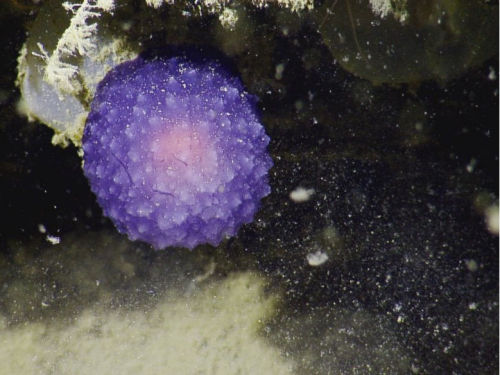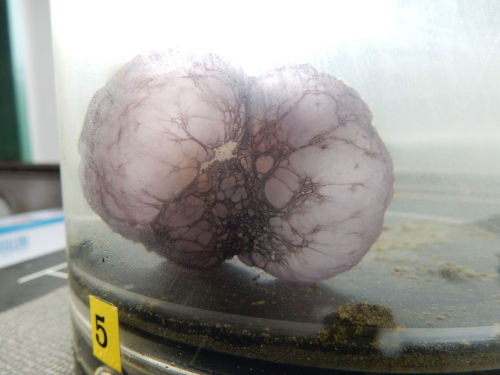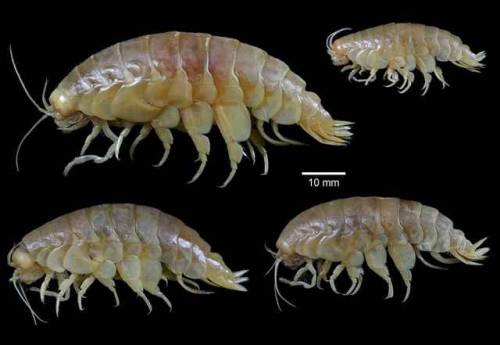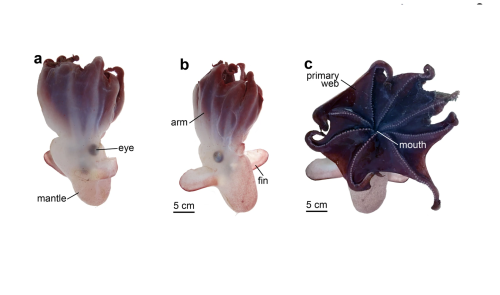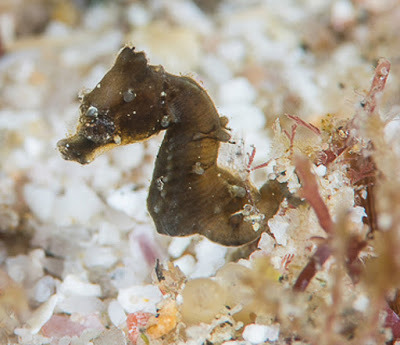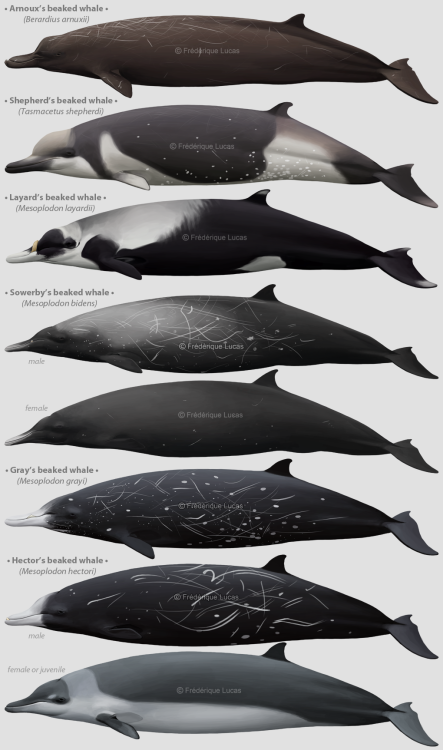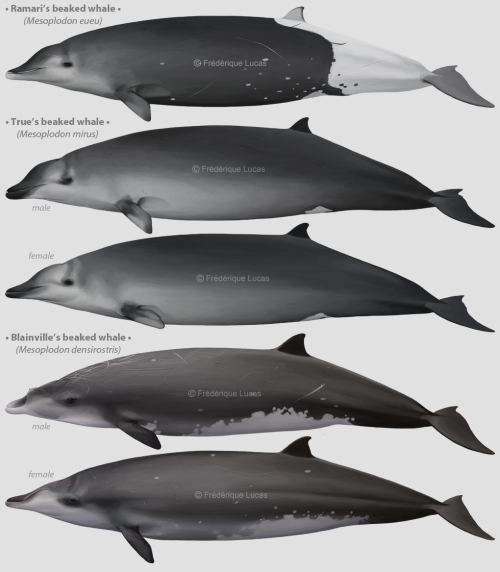#new species
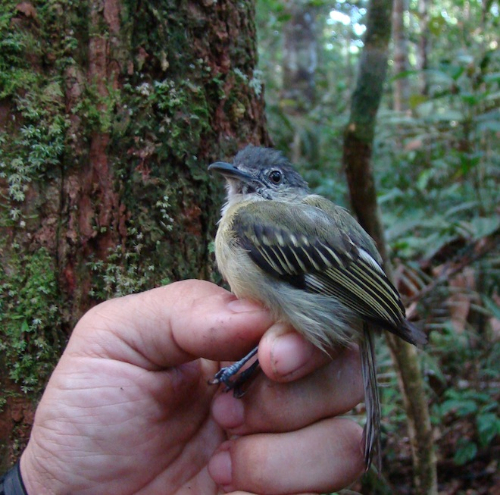
flat beaked socunduri
https://www.wired.com/2013/06/new-amazonian-birds/

Poiaeiro-de-chicomendes
https://www.wired.com/2013/06/new-amazonian-birds/

(not yet named)
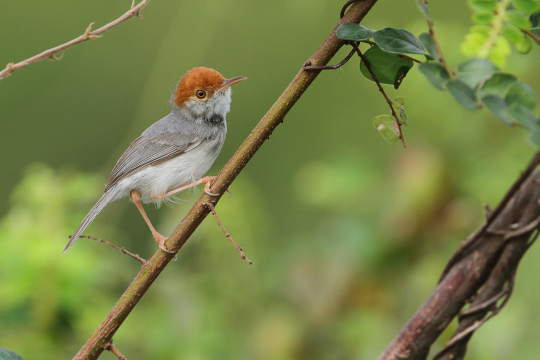
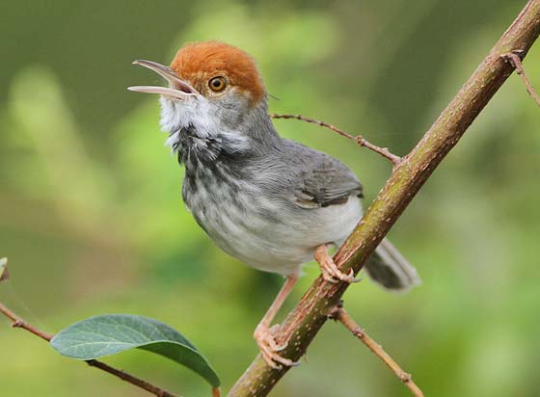
cambodian tailorbird
http://wwf.panda.org/?222513/New-species-discoveries-in-the-Greater-Mekong
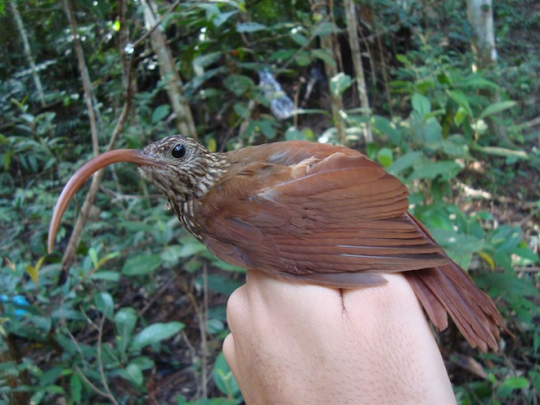
crooked beaked woodcreeper
https://www.wired.com/2013/06/new-amazonian-birds/
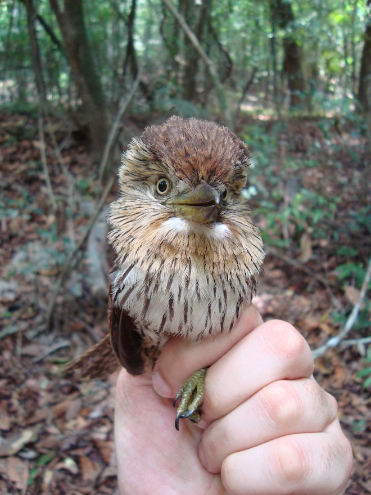
Rapazinho-estriado-do-oeste
https://www.wired.com/2013/06/new-amazonian-birds/

Chorozinho-do-aripuanã
https://www.wired.com/2013/06/new-amazonian-birds/

Can-can-da-campina
https://www.wired.com/2013/06/new-amazonian-birds/
Newly discovered rainbow-colored fish lives in the ocean’s ‘twilight zone’
Wake up babe, new fish dropped.
New Carnivorous Dinosaur Unearthed in Argentina
http://www.sci-news.com/paleontology/maip-macrothorax-10765.html
Post link
Remember that strange purple orb deep-sea scientists fought a crab for? It’s revealed itself to be a possible new species of marine slug, a pleurobranch that feeds off plankton and other microscopic organisms.
“On the E/V Nautilus, an exploration ship manned by the not-for-profit Ocean Exploration Trust, the organism’s “ball sort of unfolded into two folds”, said Susan Poulton, a spokesperson for the group, in a call from the ship.
“It revealed a foot and rhinophores, which are these ear-like structures, and you see a sort of proboscis come off the back of it,” she said. “That’s when it clearly became a gastropod of some kind.””
Photo credits: EVNautilus
Post link
I spent my day working on describing new species of Rhombophryne, the ‘diamond frogs’ of Madagascar. I’ve been working on these frogs since 2013, and have described more than half of the currently known species, but there are still so many species to describe.
Here, I am working on the second most important part of the description of one new species: the holotype description. This involves very careful examination and description of the features of the one specimen that ‘carries’ the name of the species. As you can see, I talk with myself a lot while I am doing this. I’m noting aloud features that are substantially different from other species, or things that are worth describing. I find this quite the best way to keep the features in my mind while I am looking at a lot of things at once—but of course it only works while I have my office to myself.
The *most* important part of every species description is the diagnosis. This includes the list of features that are the ones that ‘define’ your new species, and in many cases also the way that it can be told apart from all the other relevant species. In the case of the paper I am working on here, that is the last thing I will be doing for each species, as it will depend on having everything described and ready beforehand.

Meet Brookesia nana, the Nano-Chameleon, probably the smallest reptile in the world!
On an expedition to the Sorata Massif in northern Madagascar, my colleagues discovered this minuscule chameleon. Now we have the pleasure of introducing it to the world. We published the discovery in the OA journal Scientific Reports.
At 13.5 mm in body size, the adult male is the smallest adult reptile ever found. The adult female at 19 mm is a bit larger, hence whether it is the smallest reptile or not is a question of definition!
We show also that these tiny chameleons have comparatively massive genitals, and that this is true of most miniaturised chameleons. So, to update the adage: it’s not about absolute size, it’s about relative size.
You can read the paper here:
https://www.nature.com/articles/s41598-020-80955-1
and read my blog post about the new species here:
http://www.markscherz.com/archives/4800
Video coverage is available here:
Glaw, F., Köhler, J., Hawlitschek, O. et al. Extreme miniaturization of a new amniote vertebrate and insights into the evolution of genital size in chameleons. Sci Rep 11, 2522 (2021). https://doi.org/10.1038/s41598-020-80955-1
New Species of Venomous Jellies Discovered in Australia
By Megan Gannon, News Editor, Live Science | August 13, 2014Two new species of jellyfish (Keesingia gigasandMalo bella) have been discovered off the coast of Western Australia. One is surprisingly large. The other is tiny. Both are extremely venomous.
These two newfound creatures are thought to pack painful stings that cause Irukandji syndrome, a constellation of symptoms that includes lower back pain, vomiting, difficulty breathing, cramps and spasms. Though Irukandji syndrome usually isn’t life threatening, two people who were stung in the Great Barrier Reef in 2002 died from severe Irukandji-related hypertension.
Research scientist Lisa-ann Gershwin, who is director of the Australian Marine Stinger Advisory Services, described the new box jellyfish, or cubozoans, last month in the Records of the Western Australian Museum [available as a PDF].
Gershwin said that in all of the photos the jellyfish did not appear to have tentacles and that the specimen was also captured without them.
“Jellyfish always have tentacles … that’s how they catch their food,” she said. “The tentacles are where they concentrate their stinging cells. … Some of the people working with it through the years actually got stung by it and experienced rather distressing Irukandji syndrome.”
IMAGES: [1] An example of the Keesingia gigas jellyfish. Photograph: John Totterdell/MIRG Australia. Via The Guardian [2] Keesingia gigas in bloom of sea tomatoes, Crambione mastigophora. Image credit: John Totterdell / MIRG Australia.. Via Sci-News [3] That’s not a plastic bag. That’s a newly described species of box jellyfish, Keesingia gigas. Image Credit: Lisa-ann Gershwin
Post link

Working on a closed species adoptable: Lil dragon thiefs. Ferret sized (and shaped!) Dragons that love collecting small trinkets. Each dragon likes it’s own item. Some collect food such as mushrooms, some gold coins, others pink crystals, and still others collect different things. You can tell what the dragon collects by what they look like such as a crystal collecting dragon would have small crystal like protrusions. This is so it can blend into its environment when its…..collecting.
They’re very quick and considered a nuisance by many.
Still, others find them cute and like collecting them. They’re easy to trap: just bait them with their favorite treat! :D
What do you think? Let me know please. <3 <3 <3
TheRapa Nui Fairy Basslet(Pseudanthias hangapiko)is the latest new species forRapa Nui, commonly know as Easter Island, one of the world’s most isolated inhabited islands.
Showing a clearly dimorphism, with males being slightly bigger and redish than females, these fishes are tiny, with around 3 to 4.5 cm in length. These fishes were collected at 80 m depth on Hanga Piko, a mesophotic coral ecosystem near the coast of Rapa Nui, hence its name, for the location where it were collected.
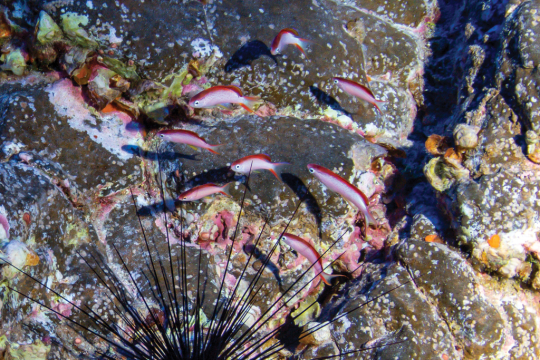
- A Rapa Nui Fairy Basslet aggregation on a rocky mesophotic coral ecosystem at Rapa Nui (Easter Island) at 80 m depth.
This fish is one of four new species that were documented from a pair of technical dives at a single location in Rapa Nui, as result of a international research collaboration, emphasizing the high number of undescribed species likely still unknown in these deep ecosystems. It is also, the first record of the genus in Rapa Nui, which hosts the second-highest level of endemism in both shallow and deep-water fishes.
- Foto: Male (upper) and female (lower) Photos by LA Rocha.
- Reference (Open Access): Shepherd et al., 2021 Pseudanthias hangapiko, a new anthiadine serranid (Teleostei, Serranidae, Anthiadinae) from Rapa Nui (Easter Island). ZooKeys.
Post link
Usually, amphipods are small, with a shrimp-like shapes, these crustaceans are found mostly marine and freshwater ecosystems. But a new species discovered in the Atacama Trench, in front of the Atacama desert, northern Chile, has shown a new exception to the rule.
The Eurythenes atacamensis is a very large amphipod species, with a maximum observed length 8.3 cm. Despite the extreme environmental conditions of high pressure, low temperature, and limited food availability, this species is considered abundant in deep sea ecosystems in the Atacama trench, and feed mainly in carrion. This finding highlights that even dominant and ecologically important species are still being discovered within the deep sea.
- Photo:Eurythenes atacamensis, female, juvenile, intersex and male desposited at the MNHNCL. Size presented here is nearly close to real size.
- Reference (Open Access): Weston.et al. 2021. Eurythenes atacamensis sp. nov. (Crustacea: Amphipoda) exhibits ontogenetic vertical stratification across abyssal and hadal depths in the Atacama Trench, eastern South Pacific Ocean. Mar. Biodivers.
Photo description: Four Eurythenes atacamensis amphipods in near real size are show in a black fond. The size is big, and one big could fit in an adult hand.
Post link
Recent expeditions to Rapa Nui (also known as Easter Island) have revealed amazing undescribed sea star species from unexplored mesophotic coral reefs and also, from deeper depths never reached before.
In a recent work published in Zootaxa, Dr Christopher Mah, a eminence in echinoderms, describe three new species for Rapa Nui, but also other news species from adjacent region in the South Pacific.

- Uokeaster ahi, named for the Rapa Nui marine deity Uoke, who submerged Rapa Nui into the ocean using a large lever, and ahifor the local word for fire. Is endemic from the waters around Rapa Nui. Photo by Terry Gosliner.

- Hacelia raaraa inhabit at depth of 80 m below surface sea, where light still pass. It is found in rocky bottoms, among hydroids and algae.
This new species is named by the rapanui word ra’ara’a for “rough and rugged” alluding to the very bumpy surface texture seen in this species. Photo by Dr. Luiz Rocha.

- Linckia profunda is one of the deepest known species in the area, and its name profunda alludes to the deep bathymetric range of this species. Arms in this species are unequal in length, round in cross-section, with an irregular surface. It is found in Rapa Nui, but also in other areas in the South Pacific. Photo by Dr. Luiz Rocha.
These findings highlight the uniqueness of these marine ecosystems and how much we still do not know about the sea. Therefore, the importance of considering them in the establishment of efective management strategies for these communities, which are within the Rapa Nui marine-protected area created in 2017.
[Photo description: Uokeaster ahi have short arms with robust and rounded spikes, similar to spheres. Hacelia raaraa have long arms, with numerous dome-like tubercles forming lines along the surface of body and arms, giving it a rough appearance. Linckia profunda have long and slim arms, with plane ]
NEW SPECIES OF DUMBO OCTOPUS DISCOVERED IN THE PACIFIC OCEAN
The dumbo octopuses are a group of deep-sea cephalopods with around 45 species know to date. These octopuses have “fins” on the sides of the head, resembling elephant ears, and have relativelly small sizes.
Now, using a cominantion of minimally invasive gene analysis and non-invasive techniques digital photography, a team of german biologists has discovered a new species of dumbo octopus, named Emperor dumbo Grimpoteuthis imperator, living at more than 4000 m depth in the northern part of the Emperor Seamounts, an undersea mountain chain in the northwestern part of the North Pacific.

- Map of the North Pacific Ocean. Red dot shown location of the Emperor seamounts, from where the Emperor Dumbo was discovered.
Usually, collecting and describing organisms from the deep ocean implies invasive methods, requiring dissection to examine internal organism, and even partial destruction of specimes. Thus, this methodology help to maintain valuable specimes for further researchs.

-Collected in July 2016, using a chain bag dredge, the specimen reached 30 cm in size, and was identified as a mature male. Using a combination of MRI, micro-CT, researchers were able to build the first interactive 3D model of a cephalopod beak.
Researchers make available a digital copy of the animal, so anybody interested can download it from the online database “MorphoBank” for further research and learning purposes. The preserved octopus itself is kept in the archives of the Museum für Naturkunde in Berlin, Germany.
- Reference: Ziegler and Sagorny. 2021. Holistic description of new deep sea megafauna (Cephalopoda: Cirrata) using a minimally invasive approach. BMC Biol.
- [Photo description: Main photo, a single octopuses with different views of its body, showing their arms, mouth and fins.
Post link
A new deep-sea softnose skate, the Western Blue SkateNotoraja hesperindica, is described based on six specimens caught in deep water at 1600 m depths off southern Mozambique and northwestern Madagascar in the western Indian Ocean.
This blue skate is a medium-sized species, reaching a total length of at least 55 cm, and is the only Notoraja species known from the western Indian Ocean and differs with other skate in the area by its intense dark blue-grayish coloration.
- Reference: Weigmann et al., 2021 Notoraja hesperindica sp. nov., a new colorful deep-sea softnose skate (Elasmobranchii, Rajiformes, Arhynchobatidae) and first generic record from the western Indian Ocean. Marine Biodiversity.
- Photo: a male Western Blue Skate, with a remarkable cyanine blue color.
Post link
NEW SEAHORSE SPECIES DISCOVERED IN SOUTH AFRICA! And is tiny!
This diminutive seahorse new species, who reach nearly 2 cm, it is confirmed to be the first record of a true pygmy seahorse from Africa, and the first known from the Indian Ocean. Named Sodwana Pygmy Seahorse(Hippocampus nalu), it was found triving in the reefs of Sodwana Bay.

-Sodwana Bay, where Sodwana Pygmy Seahorse it was discovered, in red
Seven new species of pygmy seahorses have been officially described and named within the first two decades of the 21st century, and this eighth species extends the range of pygmy seahorses by more than 8000 km, suggesting that more species may be waiting to be discovered.
Scientifically named asHippocampus nalu, it refers to Savannah Nalu Olivier a local diver who discovered this new species in Sodwana bay, also, she brought this tiny fish to researchers who described officially this species. In the South African languages, Xhosa and Zulu, nalu refers to the expression ‘here it is’ and therefore. researches extend its meaning in this case to the simple fact that H. nalu was there all along until its discovery. Additionally, nalu is also the Hawaiian word that refers to the waves or surf of the moana (ocean). A powerful name for a tiny fish.
- Photo: Sodwana Pygmy Seahorse in situ, juvenile (10 mm ), Sodwana Bay, South Africa at 14 m depth (photograph Richard Smith / oceanrealmimages.com).
- Reference (Open access):Short et al., 2020. Hippocampus nalu, A New Species of Pygmy Seahorse from South Africa, and the First Record of A Pygmy Seahorse from the Indian Ocean (Teleostei, Syngnathidae). ZooKeys.
[Photo description: a dark small seahorses, using its tails to attach itself to some algae, is small and is possible to understand it as its sizes looks similar to grains of sands around]
Post link
Greta Thunberg, the 17-year-old environment activist, has inspired thousands of people across the world, now, that effort has been offset, as two species have been named after her, and that list could probably increase.
From the forests of Nairobi, Kenia, and inspired by its labour, this tiny beetle has been named Nelloptodes gretae, and belongs to the Ptiliidae family, a highly diverse group of minute beetles, with over 400 species within, but is was stored unnamed in the Natural History Museum of Londo’s collection after it was collected in mid 60’s , until late 2019, when is was formelly described and named by researches at NHM.

- The tiny Nelloptodes gretae, measures 0.79 millimetres long, and it has no eyes or wings.
Greta’s own passion has inspired other scientists, who named a microsnail as Craspedotropis gretathunbergae, honouring her. This tiny snail inhabit Borneo tropical rainforests, and is very sensitive to the droughts and temperature extremes that are likely to be more frequent as climate change continues, comment dutchs researchers at Taxon Expeditions, who made the discovery
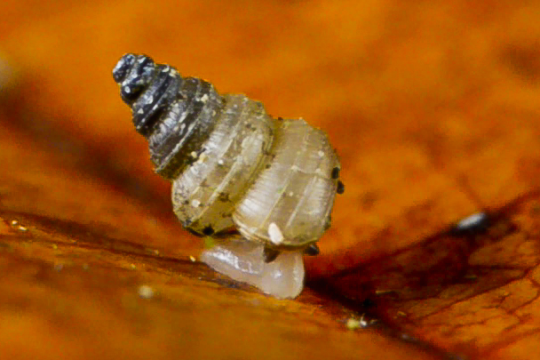
-Craspedotropis gretathunbergae has a pale, spire high conical shell, and as orther microsnails, measures about two millimeters. Photograph by Pierre Escoubas. See video of a living individual here
- reference (Open Access):
- Menno Schilthuizen et al. 2020. Craspedotropis gretathunbergae, a new species of Cyclophoridae (Gastropoda: Caenogastropoda), discovered and described on a field course to Kuala Belalong rainforest, Brunei. Biodiversity Data Journal
- -Michael, 2019. Studies of Ptiliidae (Coleoptera) in the spirit collection of the Natural History Museum, London, 6: New species and records collected by W.C. Block in Kenya and Uganda, 1964–1965. Entomologist’s Monthly Magazine
Post link
AUSTRALIAN WERE EATING A UNNAMED FISH UNKNOWN TO SCIENCE
Anew grouper species have been discovered in an Australian fish market, after a fisherman sent photos of a rare australian grouper to researchers at Queensland Museum, a fish which actually has been serverd as food.
The plain-looking fish it has no distinctive markings, and reaches at least 70 cm in length, but after Museum researchers purchased 5 individuals, and after molecular and morphological analyses, they prove it as a new species. Named as darkmargin grouper (Epinephelus fuscomarginatus), this species lives in deep water at 200 m below sea surface, off the southern end of the Swain Reefs, northeastern Australia.

- Photo: Preserved darkmargin grouper in the Queensland Museum.
The new species will now join 91 other species in the Epinephelus genus, which can be found in Atlantic, Indian and Pacific Oceans.
- Photos by Queensland Museum
- Reference:Johnson and Worthington 2019, Epinephelus fuscomarginatus (Perciformes: Epinephelidae), a new species of grouper from off the Great Barrier Reef, Australia. Zootaxa
[Photo description: an mature man holds a preserved darkmargin grouper in his hands, the second photo below shows a preserved darkmargin grouper on its side, the fish is pale and plain with no marks]
Post link
RESEARCHERS UNCOVER A NEW SPECIES OF BEAKED WHALE FROM THE COAST OF JAPAN
A new beaked whale species named Black-billed whale(Berardius minimus), which has been recognized by Hokkaido whalers for long has been confirmed. Known locally as Kurotsuchikujira 黒ツチクジラ, which means black Baird’s beaked whale, this species differs from other beaked whales by having a substantially smaller body size of physically mature individuals, proportionately shorter beak, and darker body colour.
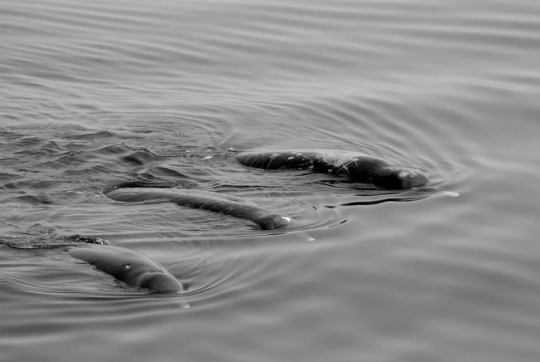
- Possible Black-billed whale Berardius minimus sighted in Nemuro strait. Note the short beak, dark body colour, and sparse linear scars (photo taken by Hal Sato on 21 May 2009).
Beaked whales prefer deep ocean waters and have a long diving capacity, making them hard to see and inadequately understood. Researchers still don’t know how mature Berardius minimus female look like, as no female where found yet. The diet of this species is unclear.
- Main image: Illustrations of Black-billed whale and Baird’s beaked whale. In general appearance, Black-billed whale resembles a small Baird’s beaked whalewith a proportionately shorter beak and more spindle-shaped body The black bars show 1 m, drawn by Yoshimi Watanabe, National Museum of Nature and Science.
- Reference: Tadasuet al., 2019. Description of A New Species of Beaked Whale (Berardius) found in the North Pacific. Scientific Reports.
Post link
NEW SPECIES ALERT: MEET THE SPADENOSE GUITARFISH
From the Gulf of California, and apparently only found there, this new species of guitarfish, named Spadenose Guitarfish (Pseudobatos buthi) is based on the description of 82 specimens. This new species is dituinguished by having a smaller body than other local guitarfish, an uniform coloration, as well a longer snout, and is found in shallow waters. The spaddlefish went unnoticed until today, probably was misidentified with the peckled guitarfish (Pseudobatos glaucostigmus), a simmilar looking guitarfish inhabiting the same area.

- Male Spadenose Guitarfish. Photo by Kelsi M. Rutledge.
Researcher Kelsi Rutledge, who described this new species, made an incredible photoshoot with her new species of guitarfish, to share its discovery using Twitter. According to her words, “no fishes were harmed in the making of this photoshoot! This is a preserved museum specimen that I took to the beach. It was not alive”. The same fish it was deposited in Scripps Institution of Oceanography.

- Kelsi and the spadenose Guitarfish. Photo by Kelsi M. Rutledge
- Photo:Kelsi Rutledge
- Reference: Rutledge, 2019. A New Guitarfish of the Genus Pseudobatos(Batoidea: Rhinobatidae) with Key to the Guitarfishes of the Gulf of California. Copeia.
Post link
New Species of Venomous Jellies Discovered in Australia
By Megan Gannon, News Editor, Live Science | August 13, 2014
Two new species of jellyfish (Keesingia gigasandMalo bella) have been discovered off the coast of Western Australia. One is surprisingly large. The other is tiny. Both are extremely venomous.
These two newfound creatures are thought to pack painful stings that cause Irukandji syndrome, a constellation of symptoms that includes lower back pain, vomiting, difficulty breathing, cramps and spasms. Though Irukandji syndrome usually isn’t life threatening, two people who were stung in the Great Barrier Reef in 2002 died from severe Irukandji-related hypertension.
Research scientist Lisa-ann Gershwin, who is director of the Australian Marine Stinger Advisory Services, described the new box jellyfish, or cubozoans, last month in the Records of the Western Australian Museum [available as a PDF].
Gershwin said that in all of the photos the jellyfish did not appear to have tentacles and that the specimen was also captured without them.
“Jellyfish always have tentacles … that’s how they catch their food,” she said. “The tentacles are where they concentrate their stinging cells. … Some of the people working with it through the years actually got stung by it and experienced rather distressing Irukandji syndrome.”
IMAGES: [1] An example of the Keesingia gigas jellyfish. Photograph: John Totterdell/MIRG Australia. Via The Guardian [2] Keesingia gigas in bloom of sea tomatoes, Crambione mastigophora. Image credit: John Totterdell / MIRG Australia.. Via Sci-News [3] That’s not a plastic bag. That’s a newly described species of box jellyfish, Keesingia gigas. Image Credit: Lisa-ann Gershwin
Post link

So, the discovery of a new tyrannosaur was announced today! Dynamoterror dynastes, or “Frightfully powerful ruler” is a tyrannosaurid that lived in New Mexico around 78 million years ago. Now I am an artist first and a science man second so I can’t say I fully understand its implications or even all the details of its discovery, but you can read all the technical details about this new feller if that’s your thing:
https://peerj.com/articles/5749/
This also happened to coincide very well with me having a day to make some fresh new content for Inktober, and I do love me some tyrannosaurs. Even super fragmentary ones that don’t really have a definite skull yet.
“For more than 50 years, scientists believed that only six species of the fast flying, insect-eating mammals known as dog-faced bats existed. That number has now increased to eight with the discovery of two new species.”
Post link
A bunch of beaked whales
I did mention I got to paint a lot of beaked whales, right? ;) After the bottlenose whales here are, well, the others. I thought it was nice to put them all together, really makes you appreciate the wonderful diversity within this big family (and it saves you from ‘a beaked whale a day’ for the next 1.5 weeks). There’s too many to all discuss individually but I have some favourites:
Shepherd’s beaked whale was a joy to paint as they are one of my favourites. Their markings are so beautiful, and they are also unique in being the only beaked whale to have a full set of teeth. For very long their colour pattern was unknown (and oft presumed to have this streaky pattern) until in 2006(!) their real colouration was formally described. They are a beautiful, elegant and unique looking species.
Sowerby’s beaked whale provided a similar ‘aha’ erlebnis for me. Often illustrated as a medium gray throughout (which is certainly fitting for the females) some interesting photographs of adult males showed a rather distinctive light blaze between their blowhole and dorsal fin. In some males it was very subtle, but others had almost as much contrast as a Layard’s beaked whale - I chose to illustrate something in the middle. Very interesting and something I hope will be the subject of further study. Males and females also have funny white lips.
Ramari’s beaked whale can’t be overlooked as it is the youngest member of the family: only described three months ago, in October 2021. Previously known as the southern form of the True’s beaked whale, analysis proved they were a species all of their own. Very happy to have painted this one too, as the mysterious southern True’s with their shining white peduncles always intrigued me.
And lastly, I can’t not mention Blainville’s beaked whale becausetake a closer look at that snout. Any whale whose mouth somehow ends up above their eyes is worthy of an extra look I think. And the Layard’s beaked whale because they have always been my number 1 favourite beaker.
Post link
This brittle star is a new ophiuroid species, animals related to sea stars and sea urchins. Called Astrophiura caroleae, is described from off Curacao in the southern Caribbean, and from the western Gulf of Mexico, in depths of 244 to 434 meters.
Despite the finding of this new species, it is remarkable that it was found in the vicinity of benthic marine debris, as shown in the image, where the specimen used to described this species (holotype) was found on a discarded beer bottle, the specimen is that small red point on the green bottle.
Post link
Kyonemichthys rumengani • A New Genus and Miniature New Species of Pipehorse (Syngnathidae) from Lembeh Straits, Sulawesi, Indonesia [2007]
Abstract:
A new genus and species of the gasterosteiform family Syngnathidae, Kyonemichthys rumengani, is described from a single 26.8 mm TL adult female collected in Lembeh Straits, Sulawesi, Indonesia.
It is one of the smallest members of the family relative to body mass, and resembles the pipehorse genera Acentronura, Amphelikturus andIdiotropiscisin having a short head and snout angled slightly to the axis of the body, dermal appendages and flexible tail lacking a caudal fin.
It differs from the three most notably in having fewer trunk rings (9, versus 11-15), more tail rings (51, versus 37-46), a posteriorly positioned dorsal fin originating on the eighth tail ring (versus usually originating on the trunk, but not posteriorly farther than the second tail ring) and a uniquely swollen trunk with a medial constriction.
(read more: NovaTaxa - Species New to Science)
Source: Martin F. Gomon. 2007. aqua, International Journal of Ichthyology. 13; 25-30. (www.wakatobi.com/fishID/articles/Gomon2007AQUA13_Syngnathidae.pdf)
photograph by W. Tan
Post link


